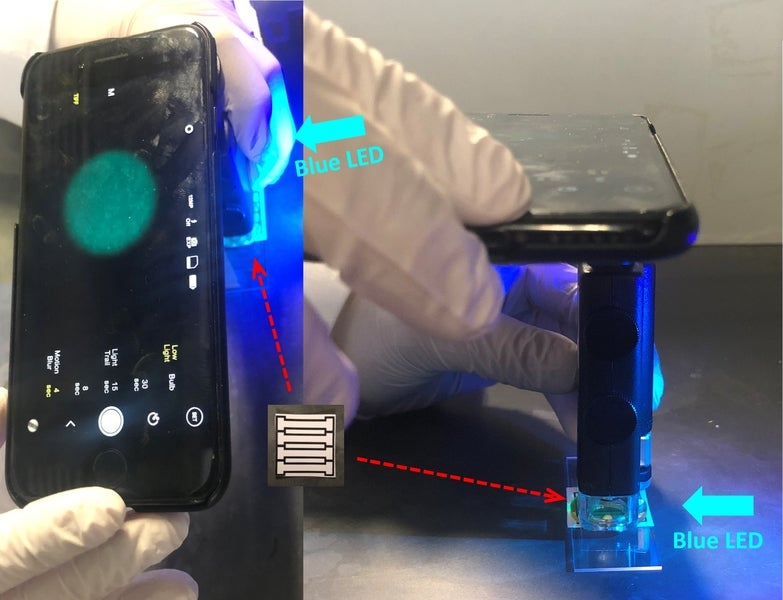
A simple and inexpensive smartphone device developed by University of Arizona researchers could be used to help detect norovirus in high-risk everyday settings.
Norovirus causes 20 million cases of food poisoning in the US each year and leads to 200,000 deaths worldwide. Equipment to detect the disease is typically confined to a laboratory setting, but as it is highly infectious and can cause illness with just ten particles, laboratory results confirming the presence of the virus can often come too late.

Discover B2B Marketing That Performs
Combine business intelligence and editorial excellence to reach engaged professionals across 36 leading media platforms.
This new device could enable the detection of the disease on the ground in norovirus risk areas like cruise ships or municipal water wells, before the infection has a chance to spread.
Researchers used paper, in the form of microfluidic chips, to build the device. Paper substrate is very cheap and easy to store, meaning the diagnostic microfluidic chips are easy to produce. The fibrous structure of the paper also allows liquid to flow easily without using a pumping system, which can be required with chips made out of materials like silicone.
Potentially infected water is added to one end of the paper chip, with tiny, fluorescent polystyrene beads added to the other. The beads are coated in a norovirus antibody, and clump together around virus particles if the disease is present.
The clumps are large enough for a smartphone microscope to detect and photograph.

US Tariffs are shifting - will you react or anticipate?
Don’t let policy changes catch you off guard. Stay proactive with real-time data and expert analysis.
By GlobalDataUniversity of Arizona biomedical engineering researcher Jeong-Yeol Yoon said: “Norovirus particles are too small to be imaged by a smartphone microscope, and so are antibodies. But when you have two or three or more of these beads joined together, that indicates that the norovirus is there, causing the beads to aggregate.”
Once the photograph is taken, an app created by the researchers counts the number of illuminated pixels to identify the number of aggregated beads, and subsequently the number of norovirus particles in the sample. The capillary action of the paper allows the beads to spread out across it, making them easy to count.
Yoon said: “You don’t have to be a scientist or an engineer to run the device. Analysis will be done automatically by the smartphone app, so all you have to worry about is loading a sample of water on to the chip.”
Microfluidic chips and a smartphone microscope could theoretically be given to public health workers to monitor water supplies for the spread of norovirus. The research team now hopes to build upon their technology to allow the detection of norovirus at even lower levels. They also hope to see the device modified to detect other hazardous water-borne substances such as carcinogens.





